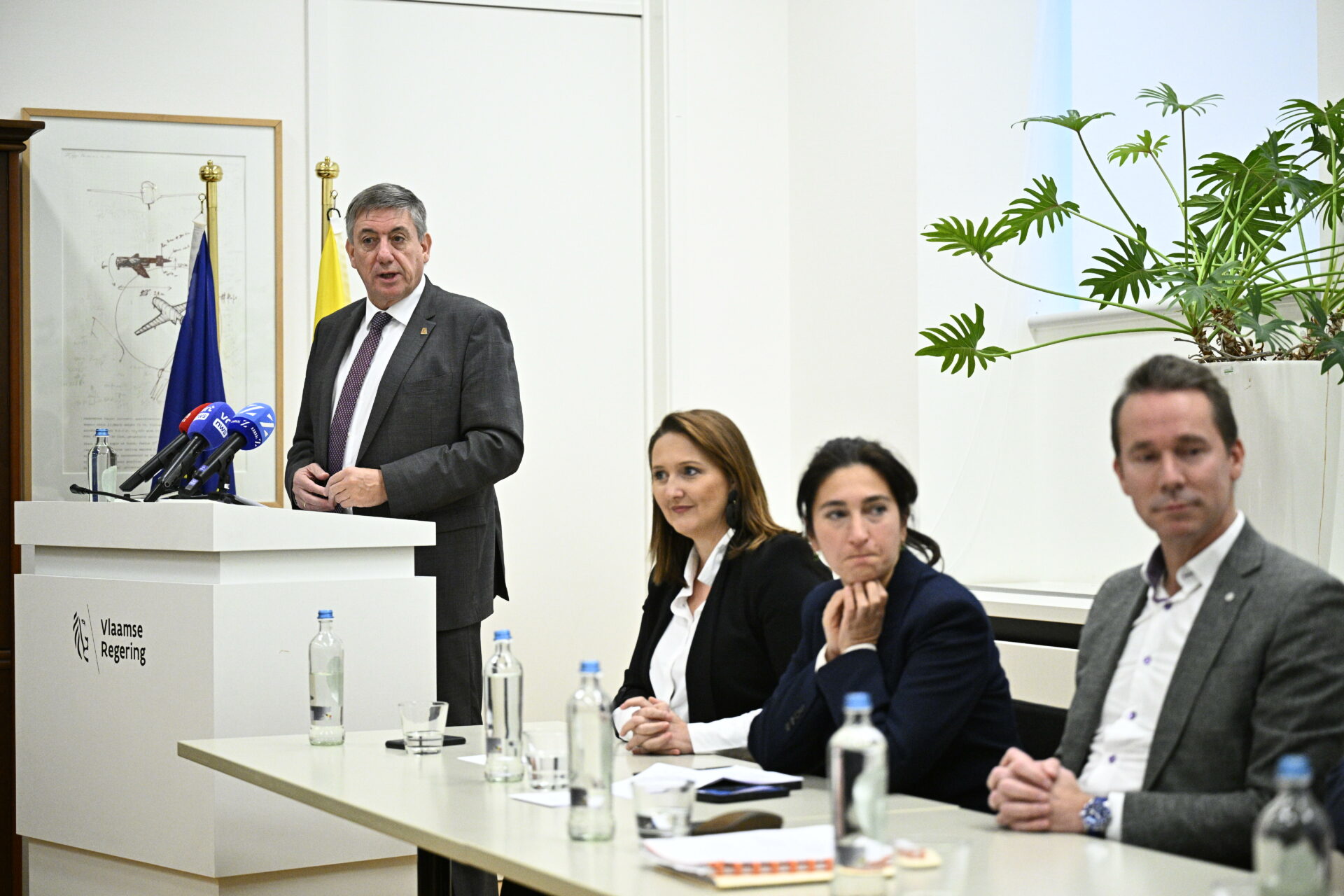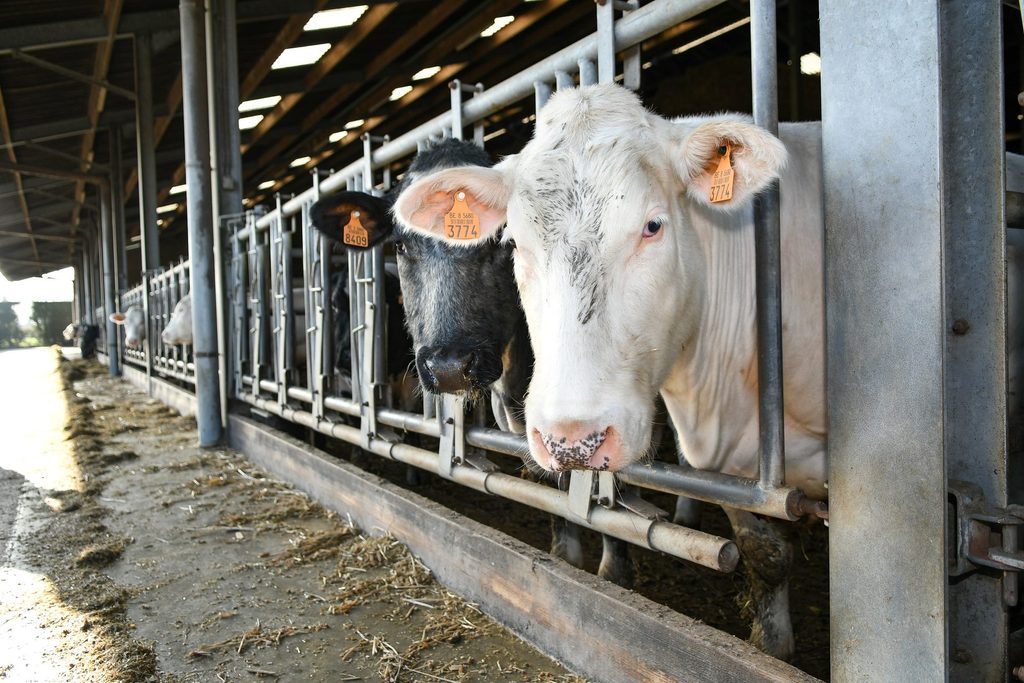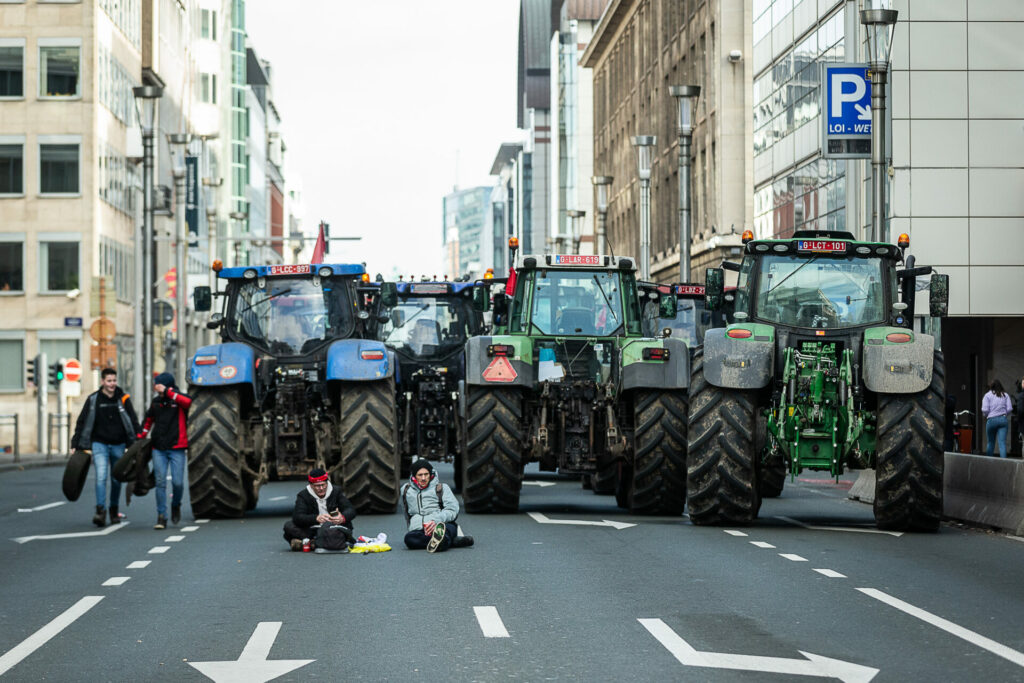After months of unsuccessful negotiations, the Flemish Government finally reached a new nitrogen agreement around 02:00 this morning, Flemish Minister-President Jan Jambon announced on social media.
While the Flemish Government has made several deals on nitrogen in recent years, it was sent back to the drawing tables every time; the government parties could not agree on the rules for permits for agriculture and industry. The proposal had to be acceptable to all majority parties as well as hold up legally – which previously was not always the case.
"We have a nitrogen agreement," said Flemish Environment Minister Zuhal Demir last night. "Nitrogen remains a sword of Damocles over our economy, but we are securing it much better. The Council of Ministers just gave the go-ahead."

Flemish Ministers Jan Jambon, Gwendolyn Rutten, Zuhal Demir and Jo Brouns. Credit: Belga / Jasper Jacobs
Last summer, the Flemish Government was on the verge of a crisis, as governing parties N-VA and Open VLD bypassed their coalition partner CD&V and submitted a decree for discussion in the Flemish Parliament. However, as the rules were not always detailed clearly, the Council of State was very critical of that decree.
The past few days again saw long negotiations, with another meeting at an undisclosed location on Saturday until the ministers finally reached an agreement late at night. Lawyers then went through the texts again to ensure there were no loose ends.
The new agreement should halve nitrogen emissions by 2030, the ministers announced at a press conference on Tuesday morning.
What was in the agreement?
There will be a relaxation for so-called "red companies" (those considered heavy polluters), which spread a lot of nitrogen in nearby nature reserves. Normally, they had to close completely by 2030, but they will now still get another chance to seriously reduce their nitrogen emissions. Chicken and pig breeders, for example, can do this with air scrubbers that remove nitrogen from the air. Such adjustments entail large investments, but compensation will be provided for reducing emissions.
The different permit thresholds for industry and agriculture (which controversially apply a stricter threshold to agriculture than to industry) will be retained in the end. As requested by the Council of State, however, these thresholds will be given a clear scientific substantiation in the text.
For both agriculture and industry, the so-called "un-authorisation threshold" will disappear. This means that companies that exceed the set emission threshold can still apply for a permit if they carry out an individual appropriate assessment – that way, decisions can be made on a case-by-case basis.
The question, however, is how this will be included in the text because the intention is not to impose an environmental study of hundreds of pages on every company, as was the case for British chemical giant Ineos.

Credit: Belga/ Bernard Gillet
External netting (which allows a farmer to take over the emission rights of another farmer who stops farming) will also be included in the agreement. This will be made possible from January 2025, provided that a favourable assessment and an environmental study demonstrate that it does not jeopardise the proposed reduction target. To bridge the period until 2025, a circular will be issued for the Nature and Forest Agency to enable an individual assessment of a company to pass on its emission allowances.
A solution was also found for the Turnhout Fen nature reserve, where the nitrogen problems are so acute that nothing can be developed in the vicinity. Now, it was decided to release the strict lock around the area and to work according to the mandatory reduction percentages included in the G8 scenario, the percentages needed to achieve the generic reduction target by 2030
Additionally, a scientific study into the possibility of looking at the problem in a different way from 2030 will also commissioned, aiming to shift the focus from the deposition of nitrogen compounds on the soil and nature to looking at emissions and the broader picture. The authorities also want to approach the EU with the request to take into account the specific Flemish situation again, especially considering Flanders as a densely populated and fragmented region.
Related News
- Air pollution worsened slightly in Belgium after the pandemic
- 'Huge impact': Flanders urged to adapt nitrogen decree
- Avoiding government crisis? Ruling Flemish parties sidestep partners to submit nitrogen decree
Despite the fact that the new nitrogen agreement will have noticeably milder impact on farmers, they have still expressed concern about the new agreement. "There is still a lot of uncertainty and we are waiting for the final text of the agreement," livestock farmer Johan Spits of the Turnhouts Vennegebied Steering Group, which unites around 500 farmers who work around the nature reserve, told VRT.
Opposition parties in the Flemish Government are not satisfied with the agreement either, with some saying it "does the opposite" of what it was supposed to do, while others say that the new agreement does not greatly differ from previous proposals.
"An emergency landing is not a soft landing," Demir said of the agreement. "A soft landing was not possible, because then we would have had to collectively tackle the problem decades ago. We had to descend very quickly, very steeply, but we did avoid a crash."

